(Given below is the transcript of the presentation made by Sh. Satish Chandra Vice Chairman, VIF during the event held on the subject at the VIF on 24 Feb 2025)
I am very glad that the Vivekananda International Foundation has organized an exhibition and a panel discussion to highlight the genocide in Bangladesh against its Hindu community. The presence of the National Security Advisor, Mr. Ajit Doval, here today adds enormously to the significance of this event and underlines the concern of our government at the plight of the Hindu community in Bangladesh.
This is only appropriate because we have since 1947 itself tended to gloss over the unenviable existence of Hindus in what is now Bangladesh. As aptly pointed out by Vivek Gumaste in an article in the Sunday Guardian datelined 8 February 2020 that “they have been the victims of an unprecedented genocide, their properties continue to be illegally usurped, their temples continue to be desecrated and their women are fair target for their detractors” forcing them to flee to India in huge numbers.
At the outset, I may point out that the atrocities currently being perpetrated against the Hindus in Bangladesh following Sheikh Hasina’s ouster are nothing new. This has been an ongoing process first in the erstwhile East Pakistan and subsequently in Bangladesh. I will not dwell on the current predicament of the Hindus in Bangladesh as I am sure others here will address this in fine detail but I will rather try to detail the enormity of its travails over the years and the fact that historically, perhaps, we in India somewhere along the line failed it.
The extent of ethnic cleansing that occurred in East Pakistan and later what became Bangladesh is well illustrated by the fact that while in 1941 the Hindu population there was 11.76 million or 28% out of a total population of 42 million, currently it is around 13.13 million out of a mere 7.95% of the total population of 165.16 million. At this rate, Dr Abdul Barakat a Bangladeshi scholar projects that by 2046 there would be no Hindus in Bangladesh.
It is important to understand as to how and why this happened.
Unlike the movement of refugees into India from West Pakistan which more or less ceased by 1950, that from East Pakistan into India never stopped and continues to date even after the creation of Bangladesh. This was because while West Pakistan had by 1950 virtually cleared out all its minorities, East Pakistan could not as its minority population was much larger and a much higher proportion of its total population. Accordingly, the minority efflux from East Pakistan into India was a more gradual process and happened from time to time whenever the embers of communalism were stoked. There were two major waves of such an efflux into India the first in the immediate aftermath of partition and second during Bangladesh’s liberation struggle in 1971. In the first wave of this migration extending upto about 1951 the total number of such migrants received by India was about 2.575 million and in this period the Muslims who migrated to East Pakistan India numbered only about 0.71 million. As against this, the Hindu and Sikh refugees received by India from West Pakistan during this period were much larger and about double this number. However, the Hindu Sikh migration from West Pakistan to India is dwarfed by the migration of about 8-9 million Hindus who fled their homes in East Pakistan in 1971 with around 80% not returning back. This was the result of a systematic campaign by the Pakistan military and its razakar supporters to exterminate the Hindu population. Thus, as brought out by Dr Anirban Ganguly in his book titled “From Partition to Progress”, members of the Hindu community were robbed of their lands and shops, systematically slaughtered, and in some cases, painted with yellow patches marked “H”. The mandate of the Pakistani Army was to “kill Hindus.” SS Sharma in a book titled “The Great Tragedy of India’s Partition” pegs the number of Hindus killed in East Pakistan in 1971 at between 1-1.5 million and their total migration from 1947 through 1971 at 15 million.
Regrettably, the travails of the Hindu community in the erstwhile East Pakistan did not come to a definitive end after its liberation. This may be attributed to multiple factors notably the short lived nature of the Mujib regime which promised to be secular in approach, the fact that thereafter the country was governed for decades by the military and the BNP who had no commitment to secular principles, who shared the Pakistani mindset of seeing Hindus as the enemy, and who encouraged the growth of Islamic fundamentalism, Sheikh Hasina’s failure to root out the latter and create a genuinely secular state in which Hindus could live in a secure and safe manner and her cohabitation with fundamentalist elements and outfits like Hefazat-e -Islam, and finally, of course, the emergence of the post Hasina dispensation which is controlled by fundamentalist, anti-Indian elements, and pro Pakistani elements. It would not be incorrect to suggest that Bangladesh has been going through a phase of Islamisation for several decades including under Sheikh Hasina’s watch. Even if not active subscribers to the Jamaat-e-Islami politics, a majority in the country have grown up with Islamic values. It is all these factors that resulted in the continuous and steady migration of Hindus out of Bangladesh into India. There were, of course, sudden spikes in the numbers that migrated when persecution became particularly intense as following the Babri masjid demolition, during elections, bouts of bloody riots etc.
Coming to the “Why” all this happened my own view is that this was intrinsic to the very nature of the two-nation theory coupled with the manner in which the leaders of India and Pakistan went about things. In this context, the following points are important to note:
- The two-nation theory gathered traction only by the stoking of communal tensions. The great Calcutta killings in August 1946 under the aegis of Suhrawardy were a part of this exercise as were the Noakhali massacres and the chain reaction they engendered throughout India made communal harmony almost impossible. The poison and hatred spread in the process of propagating the two-nation theory permanently soured communal relations in Pakistan and led to the migration therefrom of the Hindu community. It is of course true that India too was impacted and there were also communal tensions in India but this was much less as we did not subscribe to the two-nation theory and thus the minority Muslim community is thriving and prosperous in our country.
- Given the decision to divide India and Pakistan on the basis of religion it was a catastrophic blunder on the part of their leaderships not to have undertaken an exchange of populations on the basis of religion as a preemptive move. It may be mentioned that this idea had been mooted by many Sikh leaders, the Maharaja of Patiala, and some Congress leaders from Punjab and Sind. Had this been done the massacres that took place in both countries could have been averted and while there would of course have been a huge movement of populations this would have happened in a peaceful and organized manner without any bloodshed and communal bitterness would not have assumed the proportions it did.
- While in the case of West Pakistan and East Punjab, India did ultimately agree to an exchange of population of the minorities located there which led to the movement of as many as 5 million refugees from October to December 1947, Nehru would not countenance this in respect of the movement of minorities between East Pakistan and the neighbouring Indian states. Instead, in the wake of the incessant movement of refugees from East Pakistan he entered into what were theoretically very good agreements with Pakistan including the Nehru Liaquat agreement in April 1950 but since they were observed only in the breach by Pakistan, they were actually of no help in safeguarding the Hindu minority there. Indeed, SP Mookerjee resigned from the Cabinet over the Nehru-Liaquat agreement and extracts of his critique thereof are worth quoting as they go to the nub of the issue and are also applicable to the plight of the Hindus in Bangladesh today:
- “The recent Agreement [Nehru-Liaquat Ali], to my mind, offers no solution to the basic problem. The evil is far deeper and no patchwork can lead to peace. The establishment of a homogenous Islamic State is Pakistan’s creed and a planned extermination of Hindus and Sikhs and expropriation of their properties constitute its settled policy. As a result of this policy, life for the minorities in Pakistan has become ‘nasty, brutish and short’….. ….The Agreement unfortunately tries to ignore the implications of an Islamic State…… Inspite of all assurances and undertakings……we saw the gradual extermination of Hindus from the NWFP and Baluchistan and latterly from Sind as well. In East Bengal, about 13 million of Hindus were still living and their future had been a matter of the gravest concern to all of us in India. Between August 1947 and March 1948, as many as five lakhs of Hindus were squeezed out of East Bengal….Exodus from East Bengal continued unabated….It was one way traffic…..In spite of two Inter-Dominion Agreements as many as 16 to 20 lakh of Hindus were sent away to India from East Bengal….About a million of uprooted Hindus had also to come away from Sind…….The people who came away from East Bengal or Sind were not those who had decided to migrate to India out of imaginary fear at the time of partition. These were people who were bent on staying in Pakistan if only they were given a chance to live decent and peaceful lives. Towards the end of 1949, fresh events of a violent character started happening in East Bengal….. Stories of brutal atrocities and persecutions came to light….This time the attack was directed against middle class urban people and selected sections of rural people who were strong, virile and united……….Since January last [1949], at least 10 lakhs of people have come out of East Bengal to West Bengal. Several lakhs have gone to Tripura and Assam…”
- The possibility of preventing the Hindu migration from East Pakistan by extracting a price for the same from Pakistan was not sufficiently explored. For instance, Patel suggested that if Pakistan was not prepared to settle the matter “amicably” and was determined to turn out the Hindus “it must be prepared to part with sufficient land to enable us to settle them.” This idea was echoed by President Rajendra Prasad as also by Dr BC Roy who was categorical asserting that the “Hindus will not stay in East Bengal, as the general mass of Muslims do not want them, and so create situations inducing Hindus to leave”. Regrettably this idea found no traction with Nehru.
Given the foregoing, coupled with the fact that the present dispensation in Bangladesh is inimical to the Hindus resident there, the latter may as projected by Professor Barakat become extinct in that country in another few decades. In this backdrop, while we have made known our unhappiness to the authorities in Bangladesh about the plight of the Hindu community there much more needs to be done. Our not having done so is perhaps the outcome of our unfortunate tendency of being overly reticent in pushing our case. I would like to mention a couple of examples to bring home this point. For instance, in presenting our case on Jammu and Kashmir in the UNSC on 15 January 1948 we merely called for withdrawal of the invaders and stoppage of fighting and not as we should have for condemning Pakistani aggression and for imposing sanctions on it. In a somewhat similar vein as brought out in “The Blood Telegram” authored by Gary Bass, India through 1971 sought to hide from its own people the extent of butchery being perpetrated by the Pakistan Army and the razakars against the Hindus in Bangladesh. I believe we need to shed this reticence and, therefore, greatly welcome this initiative of the VIF to draw attention to the travails of the Hindus in Bangladesh. A much more proactive stance by India designed to focus both national and international attention on these developments is the need of the hour. I had hoped that in the last session of Parliament the least that should have been done was to have passed joint resolution condemning the Bangladesh Government and calling upon it to take steps to ensure the safety and security of its minorities. At the international level I also hope that we will raise this matter at all relevant fora. Finally, in keeping with the spirit of the CAA we should also consider readily granting citizenship to all Hindus in Bangladesh who wish to come to India. This should be accompanied by the deportation of all the illegal Bangladeshi Muslim migrants in India.
(The paper is the author’s individual scholastic articulation. The author certifies that the article/paper is original in content, unpublished and it has not been submitted for publication/web upload elsewhere, and that the facts and figures quoted are duly referenced, as needed, and are believed to be correct). (The paper does not necessarily represent the organisational stance... More >>


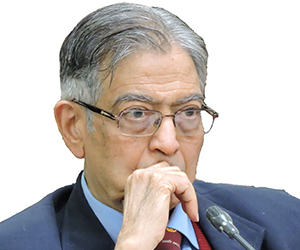
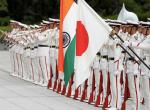
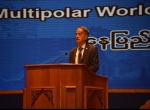


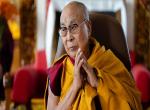


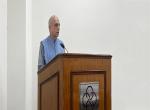
Post new comment